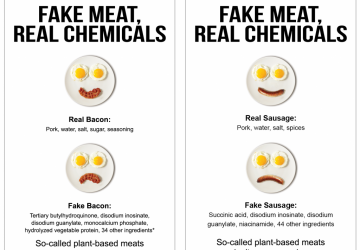For years America’s self-anointed “food police” have targeted schools in their quest to impose heavy-handed policies on what people eat and drink—even to the point of cupcake bans. But today, Brian Wansink and David R. Just of Cornell University published an interactive graphic in the New York Times that illustrates how subtle cafeteria changes, not finger-wagging campaigns, can make a big difference in the way kids eat:
Children and teenagers resist heavy-handed nutritional policies — and the food that is associated with the heavy hand. No food is nutritious, after all, until it is actually eaten.
A smarter lunchroom wouldn’t be draconian. Rather, it would nudge students toward making better choices on their own by changing the way their options are presented. One school we have observed in upstate New York, for instance, tripled the number of salads students bought simply by moving the salad bar away from the wall and placing it in front of the cash registers.
You can see the full illustration here. Among the researchers' proposed solutions: moving the salad bar closer to the cash register, creating a separate express line for students not buying chips or dessert, and storing ice cream in closed containers.
Wansink and Just have been showing for years that heavy-handed bans on junk food will never be the key to encouraging good eating. Last year, they found that when carrots were labeled “X-Ray Vision Carrots,” preschoolers ate 62 percent more of the them.
In reality, school prohibitions on foods can backfire. When one school in Austin, Texas banned candy from its vending machines, enterprising students made up to $50 per day selling Skittles and Baby Ruths as a black market of sweets started thriving almost immediately.
Tinkering with the lunch line may work to connect kids with veggies, but reformers should also remember that our national shortage of recess and physical activity also contribute to student obesity. One “Shape of the Nation” study released this year found that 65 percent of teens didn’t meet their recommended levels of physical activity on at least five out of seven days of the week. Recess and PE class have been cut from many school districts in an effort to focus on academic curricula. But research has repeatedly shown that taking breaks for physical activity increase students’ concentration, attention span, classroom behavior, and achievement scores.
All of this common sense is lost on America’s overzealous anti-food crusaders. This week brought news that feds are trying to ban potatoes from child nutrition programs. Yes, potatoes. Perhaps they’ll reconsider if we call spuds “Supersonic Speed Tubers.”




